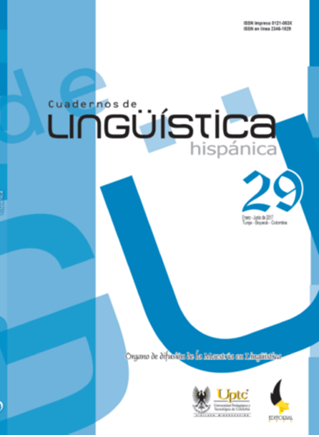The Constitution of the Spanish or Castilian Language

Abstract
After the Spanish conquest and colonization, the underdeveloped nations of America had to accept the Spanish language as their own. The language that the kingdom of Castille had already been imposed on other Iberian provinces, with the exception of Portugal. At this moment, this language was just acquiring grammatical accuracy, as a consequence of the evolution of the Latin language, introduced in the Hispanic peninsula during the Roman empire in the year 19 B.C. Over the decades, Latin phonetics, morphology, syntax and semantics were altered to form many dialects. Some of them, like the Castilian, took a distance from their mother tongue and became different languages altogether, with their own grammatical systems. Later Visigoth and Arab invasions left a scarce trace on the Castilian language, because Hispanics (Roman name meaningland of rabbits ) had a more solid culture than their invaders. The Spanish we speak today comes from the Classical Latin as well as from the Vulgar Latin, Late Latin and Medieval Latin, spoken and written in the Middle Ages (V-XVI centuries). Each of these periods were important to the phonological, morphological, syntactic and semantic changes that occurred in Spanish. Nowadays, Spanish keeps evolving, despite universality and the expansion of our linguistically unifying communication media.Keywords
Language, Latin, Evolution, Spanish, Invasion, Communication, Shape, Content
Author Biography
Miguel Ángel Ávila Bayona
Docente (r) Universidad Pedagógica y Tecnológica de Colombia.
References
- Alatorre, A. (1979). Los 1001 años de la lengua española. México D.F.: Fondo de Cultura Económica.
- Arciniegas, R. (1998). Del pensamiento a la acción por la palabra. Santa Fé de Bogotá, D.C., Colombia: Ediciones jurídicas Gustavo Ibáñez.
- Camacho, H., Camporán, J., & Castillo, F. (1998). Manual de etimologías grecolatinas. México D.F.: Limusa.
- Gurisati C. periodista RCN. (23- 05-2016). Noticiero de televisión del medio día.
- Lapesa, R. (1966). Historia de la lengua española. Madrid: Gredos.
- Martiné, A. (1974). Elementos de lingüística general. Madrid: Gredos.
- Menéndez Pidal, R. (1985). Manual de gramática histórica española. Madrid: Espasa-Calpe.
- Penny, R. (1991). Gramática histórica del español. Barcelona, España: Ariel S.A.
- Villegas, J. (1960). Dos años de latín; analogía, sintaxis y ejercicios (8ª ed.). Bogotá D.E.: Voluntad.
Downloads
Download data is not yet available.
